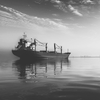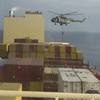Chuck Raymond, President, Chairman and CEO of Horizon Lines insists container security couldn¹t become a reality unless there is "a coordination of all parties participating in cargo movement."
"With the question of information integrity now in the forefront, how do we further secure the supply chain when we cannot necessarily trust all the data being provided?" asked Raymond. "All shipment information should be required from the point of the shipment’s origin in advance of container stuffingS. The location where the goods are initially stuffed into a
container to begin their journey is the initial point at which shipment
information should be captured."
Raymond spoke at the National Defense Industrial Association Transportation Security Administration Conference held in Charleston, S.C., this week. Raymond noted
that more than six million containers enter U.S. seaports annually aboard more
than 5,000 ships from greater than 50,000 port calls. "Can we be sure
today that a shipper will not falsely declare a shipment’s contents and
enable a container to explode inside one of our seaports or largest cities?"
he said. Every transportation mode "has to have the capability to provide
status information relative to their portion of the supply chain origin
through to destination. Intermodal, ocean and terminal operators/stevedores
must consistently provide their information on a real-time basis," said Mr.
Raymond.
"The shipper, therefore, bears the responsibility for one of the most
important parts of cargo security the first piece of cargo information,"
he added. "Some shippers are early adopters of the technologies and
processes necessary to shelter our nation. These organizations are looking
at electronic seals and tags, warehousing systems, and even access controls
at their facilities."
"The migration to full supply chain security involves the tight integration
of operational information with data coming from electronic devices, and
subsequently married to planned and actual cargo events. This creates a
real-time "window" into 24/7 cargo status regardless of transportation mode
or location," said Chuck Raymond. "Risk assessment is easily enabled
because complete visibility has been achieved, and alerts have been
triggered for proactive responses. The proactive steps have been taken to
prevent a catastrophic event with human and global economic impact."
He closed: "The integrity of those six million containers arriving in US
ports is challenging, but not impossible. Because, like everything else, it
all starts at the beginning."
Sponsored Content
Chris-Marine’s solutions help to prolong engine lifetime

Subscribe for
Maritime Reporter E-News
Maritime Reporter E-News is the maritime industry's largest circulation and most authoritative ENews Service, delivered to your Email five times per week










